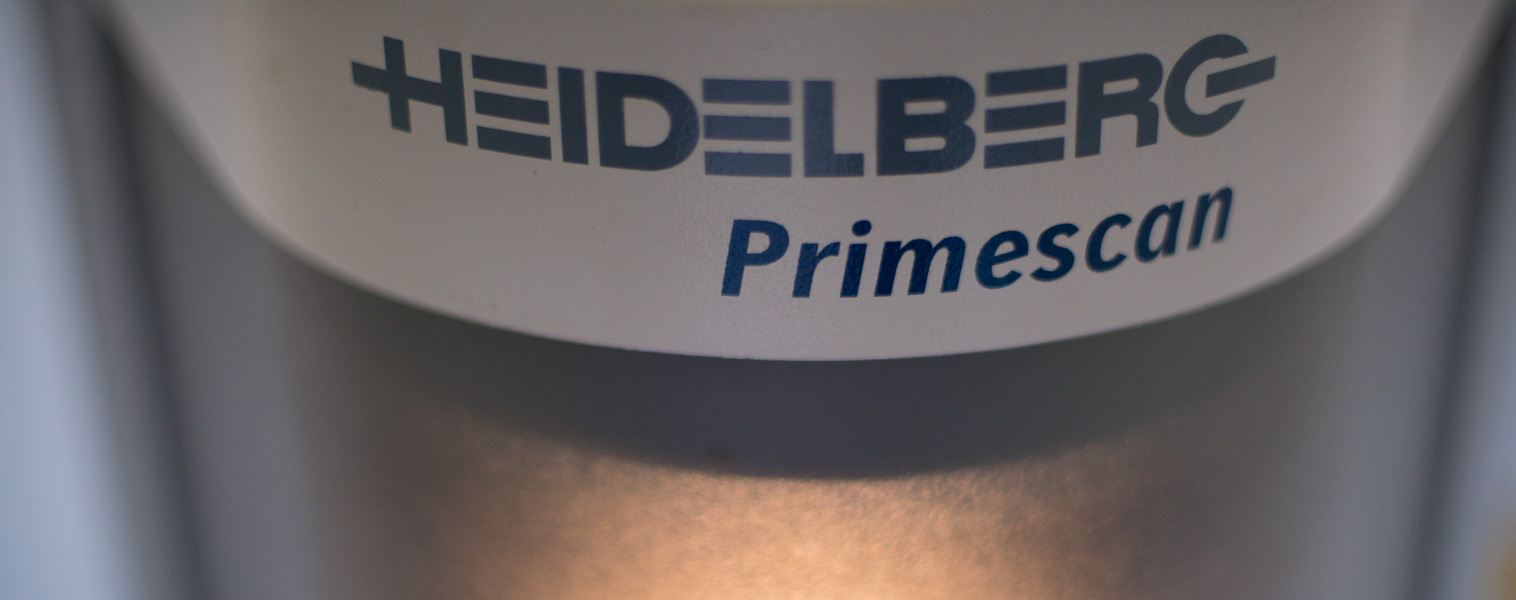
Which Drum Scanners?
Over the last decade, we have tested nearly every drum scanner and flatbed scanner available and it’s fair to say that the results have been a bit of a mixed bag. There are definitely ‘poor’ drum scanners out there and there are many that excel at one aspect or another. Many drum scanners advertise their resolution as 11,000 dpi and more, however if you test with a resolution chart it turns out that nearly all of them are below 6000dpi and many below 5000dpi. These highest resolution scanners had a trade off as well as most exhibited exaggerated grain – not only does this obscure detail but it greatly limits the amount of sharpening you can apply to a scan.
In practice, most scans are made at 3000dpi for 5×4 film and 5,000dpi for medium format and what is more important for our customers is which scanner provides the best results for making prints at these resolutions. In our tests, it was the Heidelberg Primescan that produced the best balance of low noise/grain, good shadow recovery and best sharpness at typical scanning resolutions. For these reasons, we purchased a Heidelberg Primescan 8200 & 8400.
Debunking Heidelberg Myths
If you read about Heidelberg drum scanners you will sometimes find people suggesting that they have various problems. For instance, it is suggested that they aren’t good at scanning negatives, transparency scans are noisy, it hasn’t got a good resolution because of its “aperture” and it is limited in the size of scans it is capable of.
Noisy Scans and Sharpening
The default software that the Heidelberg comes with is called Newcolor. Newcolor has one major problem, there is no way of switching off sharpening when scanning in positive (transparency) mode. This sharpening enhances noise and is impossible to remove. Instead of using Newcolor, we use Silverfast. This software allows us to make ‘raw’ scans that bypass all of the processing that is built-in with Newcolor and delivers sharpening free scans.
Scanning Colour Negatives
The Newcolor software has built in settings for scanning negatives that many people don’t like. We dislike nearly all methods of automated negative inverting and instead we have developed a system of manually inverting colour negatives that our customers tell us produces a lot better results without blocked up shadows, noise, blown highlights and colour crossovers.
Incapable of High Resolution scans because of Aperture
Many drum scanners have an aperture built into their scanning head that changes the sample size of each ‘pixel’. A larger aperture size can be used to ‘smooth’ out the effects of grain. However, this typically leads to a lower resolution. A smaller aperture leads to higher resolution but grain can quickly blot out details. Theoretically, the aperture size limits the maximum resolution of a scanner. The Heidelberg has a smallest aperture of 10 microns and it is said that this causes the scanner to be limited to 2500dpi. The proof is in the pudding they say and it turns out that in testing the scanner can reach at least 5000dpi. In our testing of other scanner manufacturers made a series of tests at different apertures scanning colour negatives, black and white and colour slide film and it turned out that for typical films, resolution dropped as you went below an 8 micron aperture (because ‘noise’ took over from the signal). This is more than likely why the Heidelberg designers used the 10 micron that they did. (smaller apertures may well be useful for scanning line or screened art however hence smaller apertures make sense in ‘grainless’ images).
Size of Scans possible
There is a limit on the size of scans available, that is true. The limit is 30,000 pixels along the long axis and a 2Gb file size limit. This hasn’t caused any issues with our customers requirements.
Maintenance and Repair
Just like a sports car, a drum scanner won’t perform at it’s best unless it is well maintained. We ensure our drum scanners are serviced every two years and perform regular checks to ensure they are working within specifications. We also have two drum scanners so that your orders will never be delayed due to repairs and maintenance.
